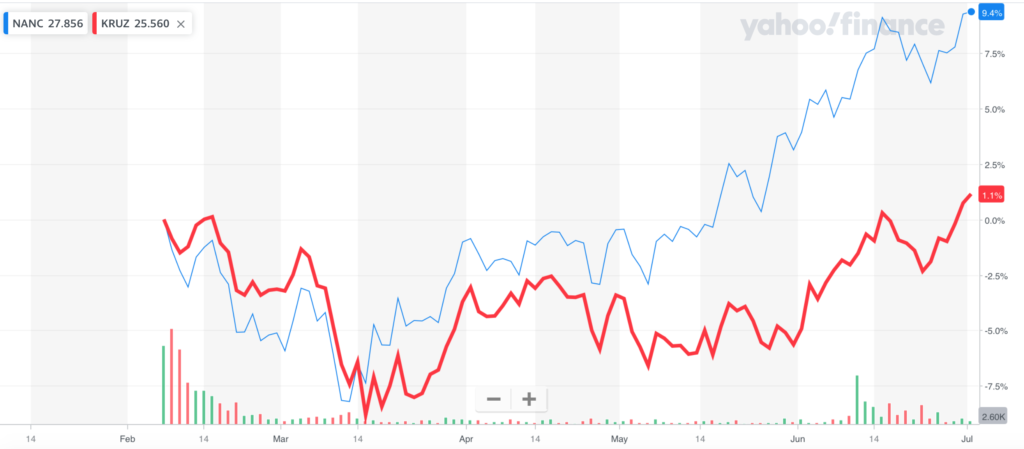by Fred Fuld III
Some investors are opposed to purchasing stocks that benefit from the manufacture of weapons, and that’s completely understandable. If you fall into that category, then this post is probably not for you.
The defense industry is currently in a state of flux. On the one hand, there is a growing demand for defense products and services, as the world becomes increasingly unstable. On the other hand, there are also growing concerns about the cost of defense spending, and the need to reduce military budgets.
As a result, defense companies are facing a number of challenges. They need to find ways to reduce their costs, while also developing new products and services that meet the changing needs of the military. They also need to be prepared for the possibility of a decline in defense spending, and the need to diversify their businesses.
Despite these challenges, the defense industry is still a major economic force. In the United States, the defense industry employs over 2 million people, and generates over $400 billion in annual revenue. The industry is also a major source of innovation, and has been responsible for the development of many of the world’s most advanced technologies.
The future of the defense industry is uncertain, but it is likely to remain a major player in the global economy. The industry will need to adapt to the changing needs of the military, and the growing concerns about the cost of defense spending. However, the industry also has a number of strengths, including its strong research and development capabilities, and its ability to adapt to new market conditions. As a result, the defense industry is likely to remain a major economic force for many years to come.
Here are some of the key trends that are shaping the defense industry today:
- The rise of new technologies. The defense industry is constantly evolving, as new technologies are developed. These technologies are changing the way that wars are fought, and they are also creating new opportunities for defense companies. For example, the development of drones and other unmanned systems is changing the way that the military conducts surveillance and strikes.
- The growing importance of cybersecurity. Cybersecurity is becoming increasingly important in the defense industry. As militaries become more reliant on digital systems, they are also becoming more vulnerable to cyberattacks. Defense companies are developing new technologies to protect military systems from cyberattacks.
- The need for greater international cooperation. The defense industry is becoming increasingly globalized. As militaries around the world face similar threats, they are increasingly working together to develop new technologies and share resources. This is creating new opportunities for defense companies that are able to operate in multiple markets.
The defense industry is a complex and ever-changing industry. However, it is also a major economic force that is likely to remain important for many years to come.
Lockheed Martin (LMT) is an American aerospace, arms, defense, information security, and technology corporation with worldwide interests. It is the world’s largest defense contractor by revenue for the past 43 years. Lockheed Martin is headquartered in Bethesda, Maryland, and employs approximately 114,000 people worldwide.
This $119 billion market cap company trades at 21 times trailing earnings and 17 times forward earnings. Long term annual earnings per share growth estimate over the next five years is anticipated to be 10.9%. The company pays a dividend yield of 2.57%.
Raytheon Technologies (RTX) is an American multinational aerospace and defense corporation with worldwide interests. It was formed in 2020 by the merger of Raytheon and United Technologies. Raytheon Technologies is headquartered in Waltham, Massachusetts, and employs approximately 190,000 people worldwide.
The stock has a trailing price to earnings ratio of 26 and a forward P/E of 17. Earnings per share this year grew by 35.9%, and long term annual earnings per share growth estimate over the next five years is predicted to be 10.8%. The yield is 2.43%.
The Boeing Company (BA) is an American multinational corporation that designs, manufactures, and sells airplanes, rotorcraft, rockets, satellites, telecommunications equipment, and missiles worldwide. It is the world’s largest aerospace company by revenue for the past 26 years. Boeing is headquartered in Chicago, Illinois, and employs approximately 160,000 people worldwide.
The company has been generating negative earnings, but has a forward P/E of 41. The stock does not pay a dividend.
General Dynamics (GD) is an American multinational defense, information technology, and aerospace company that is headquartered in Falls Church, Virginia. General Dynamics is the world’s fifth-largest defense contractor by revenue. The company employs approximately 100,000 people worldwide.
The stock trades at 18 times trailing earnings and 15 times forward earnings. The long term annual earnings per share growth estimate over the next five years is predicted to be 10.8%. The yield is 2.43%.
Northrop Grumman (NOC) is an American global aerospace and defense technology company with worldwide interests. It is the world’s sixth-largest defense contractor by revenue. Northrop Grumman is headquartered in Falls Church, Virginia, and employs approximately 90,000 people worldwide.
The stock trades at 15 times trailing earnings but 19 times forward earnings. The long term annual earnings per share growth estimate over the next five years is expected to be only 1.9%. The stock pays a yield of 1.64%.
These companies are responsible for developing and manufacturing a wide range of defense products, including aircraft, ships, missiles, and weapons systems. They also provide a variety of services, such as maintenance, repair, and overhaul.
The defense industry is a major economic force, and it is expected to continue to grow in the coming years. This is due to a number of factors, including the increasing threats posed by terrorism and cyberwarfare, and the growing demand for new technologies.
Disclosure: Author didn’t own any of the above at the time the article was written.










